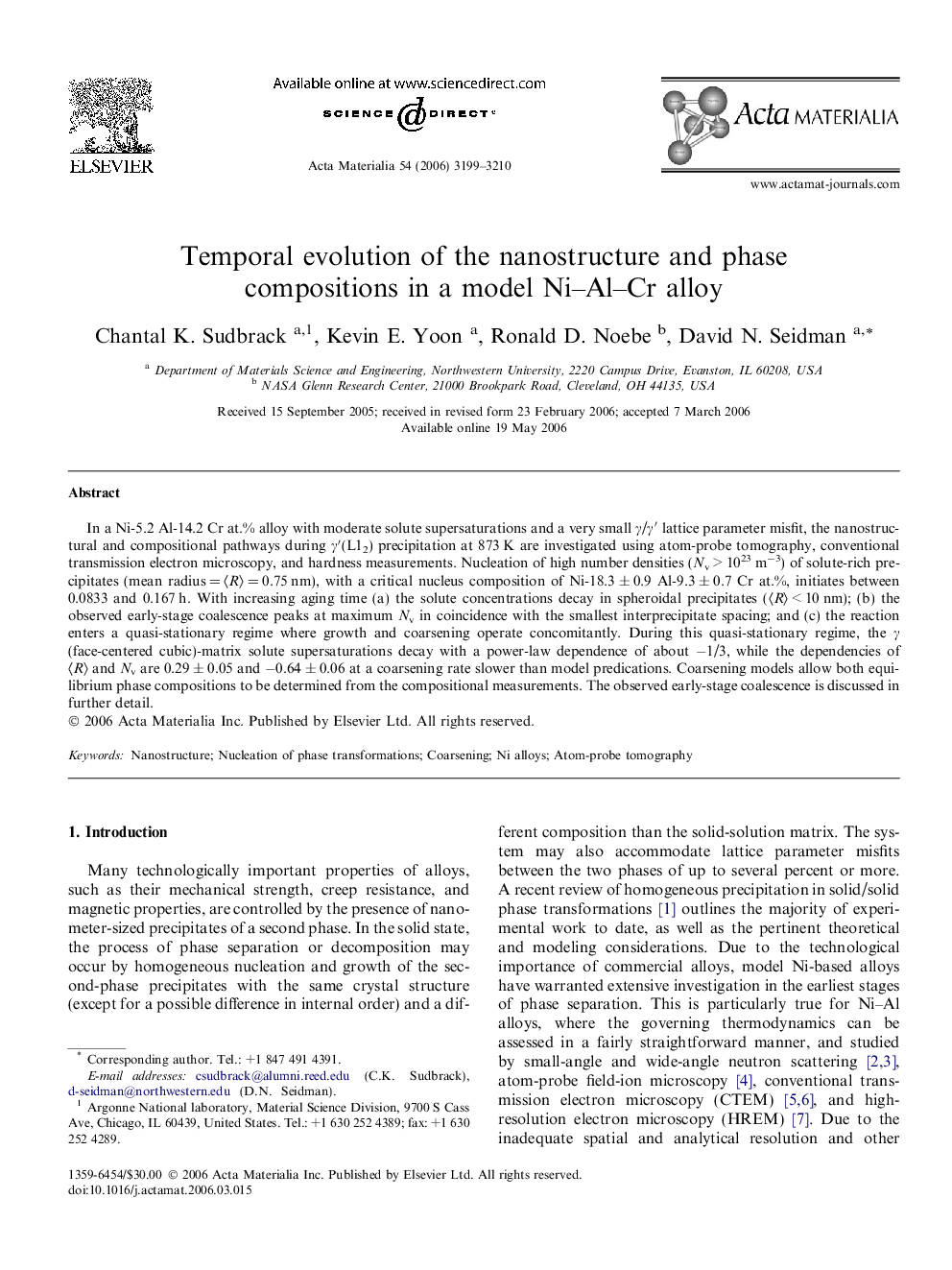| Article ID | Journal | Published Year | Pages | File Type |
|---|---|---|---|---|
| 1450409 | Acta Materialia | 2006 | 12 Pages |
In a Ni-5.2 Al-14.2 Cr at.% alloy with moderate solute supersaturations and a very small γ/γ′ lattice parameter misfit, the nanostructural and compositional pathways during γ′(L12) precipitation at 873 K are investigated using atom-probe tomography, conventional transmission electron microscopy, and hardness measurements. Nucleation of high number densities (Nv > 1023 m−3) of solute-rich precipitates (mean radius = 〈R〉 = 0.75 nm), with a critical nucleus composition of Ni-18.3 ± 0.9 Al-9.3 ± 0.7 Cr at.%, initiates between 0.0833 and 0.167 h. With increasing aging time (a) the solute concentrations decay in spheroidal precipitates (〈R〉 < 10 nm); (b) the observed early-stage coalescence peaks at maximum Nv in coincidence with the smallest interprecipitate spacing; and (c) the reaction enters a quasi-stationary regime where growth and coarsening operate concomitantly. During this quasi-stationary regime, the γ (face-centered cubic)-matrix solute supersaturations decay with a power-law dependence of about −1/3, while the dependencies of 〈R〉 and Nv are 0.29 ± 0.05 and −0.64 ± 0.06 at a coarsening rate slower than model predications. Coarsening models allow both equilibrium phase compositions to be determined from the compositional measurements. The observed early-stage coalescence is discussed in further detail.
